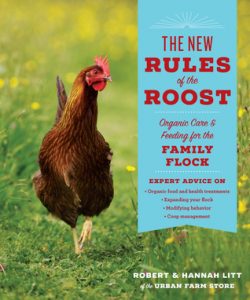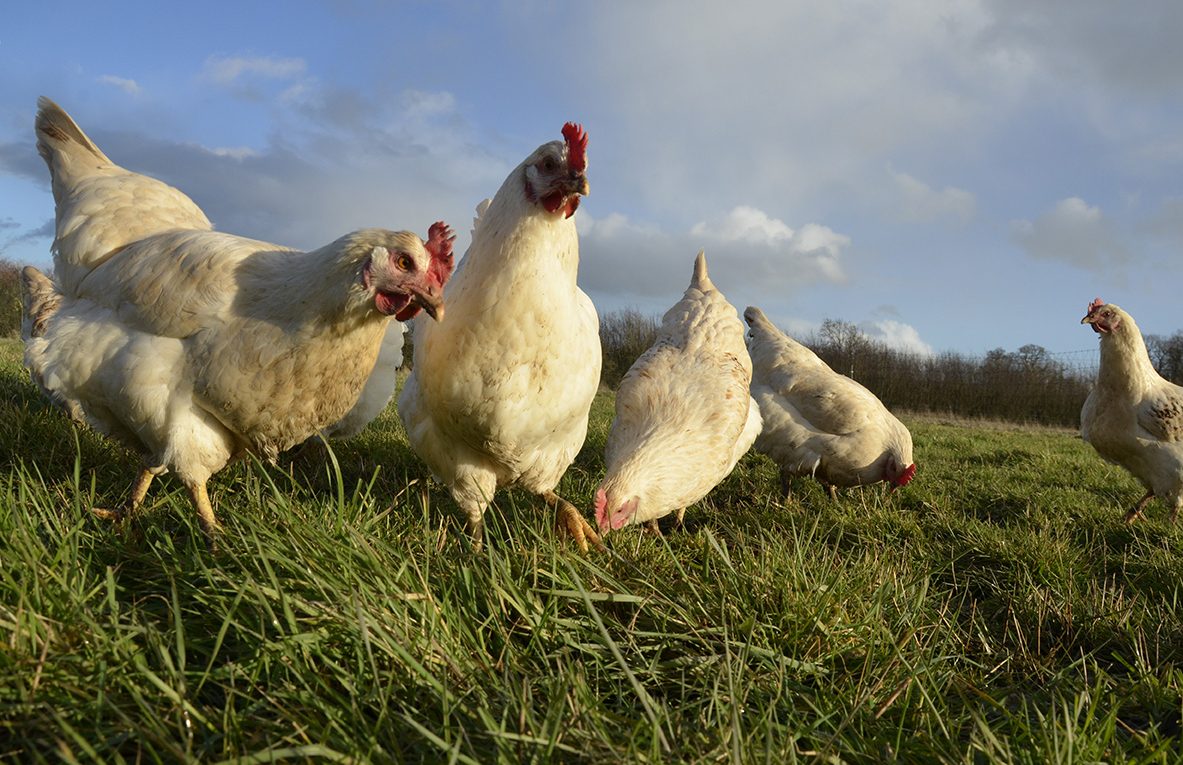The New Rules of the Roost

A new book on chicken keeping dropped through the mailbox – this time The New Rules of the Roost:Organic care and feeding for the family flock written by Robert and Hannah Litt and to be published by Timber Press (ISBN 978-1-60469-818-3 in July 2018. This is the second book on chickens by the authors, their first being A Chicken in Every Yard. Despite being a US book, there is a lot of quality information that is of interest to every poultry keeper, regardless of where they live. Not surprisingly, I particularly liked the emphasis on organic. I wasn’t so interested in the introductory chapters on the different breeds and the types of successful hen houses but sections on nutrition and hen health ticked lots of boxes and I picked up many useful tips.
The nutrition section started with the nutritional needs of chickens and the elements of the modern poultry diet. There were suggestions for supplements, giving scratch grains and even growing your own corn – not the modern stuff but the older heritage varieties that are better suited to small scale growing or flint corn and popcorn. These varieties differ from sweet corn in that they are starchier and better suited to drying and feeding to chickens. I liked the way the authors stressed the need for fresh forage for healthy chickens. Chickens love to forage – you only have to watch your chickens work their way around their pen picking at leaves, seeds and small insects. If your chicken pen is static and lacking vegetation then its even more important that you supply some fresh forage for them to pick over. Foraging activity leads to more contented hens and often undesirable behaviours such as aggression and feather pecking can be linked to a lack of foraging opportunities. The section on non-traditional feeds interested me too – feeding silage and sprouted grain. Sprouted grain is gaining interest in the UK with several farmers looking to supplying sprouted grains to their livestock as the germination process makes the grain more digestible. The authors suggest that you fill a bucket with lire of water, 500g uncracked grain and 1 teaspoon of citric acid. Leave in a warm place over night and then spread the soaked grains into porous trays, creating a thin layer. Rinse the grains with water and citric acid two to three times a day and after a week you will have a thick mat of germinated seeds that you can feed to your birds.
Another interesting section was that on whole hen health. The authors recognise that getting good quality veterinary care for chickens can be difficult to find and at their Urban Farm Store in Oregon, chicken health advice is the most requested thing. They are not vets, so the advice they give in the book focuses on prevention with a step-by-step guide to a chicken examination. For example, when you pick up a chicken what do you notice? Is she underweight or heavier than expected? Whats the state of her feathers and skin? What about her legs and the condition of condition of her comb and wattles etc. I loved the idea of giving a epsom salt bath! This is reported to be a great pick-me-up for a sluggish or dull chicken. I’m not sure any of my girls are tame enough for that, but adding epsom salts to a bath is said to be restorative for people, so why not chickens. The section on diseases was comprehensive too.
There is a fascinating section on botanicals and how they can be used to boost hen health. The authors researched scientific literature to see which of the many traditional remedies are actually effective. For example, adding nigella / black cumin / black caraway (Nigella sativa) seeds to the diet can increase egg production and decrease E.coli colonisation leading to a better bacterial balance in the gut. The suggested rate is 1 cup to 3 lbs of chicken feed. Herbs are often recommended to keep red mites at bay, for example, lavender, feverfew, rosemary and thyme but the authors found that the most effective to be thyme oil. The others did not have much effect other than as deodorisers.
A fascinating book with lots of detailed information that was well researched. A good buy.
This book was supplied free of charge by Timber Press




